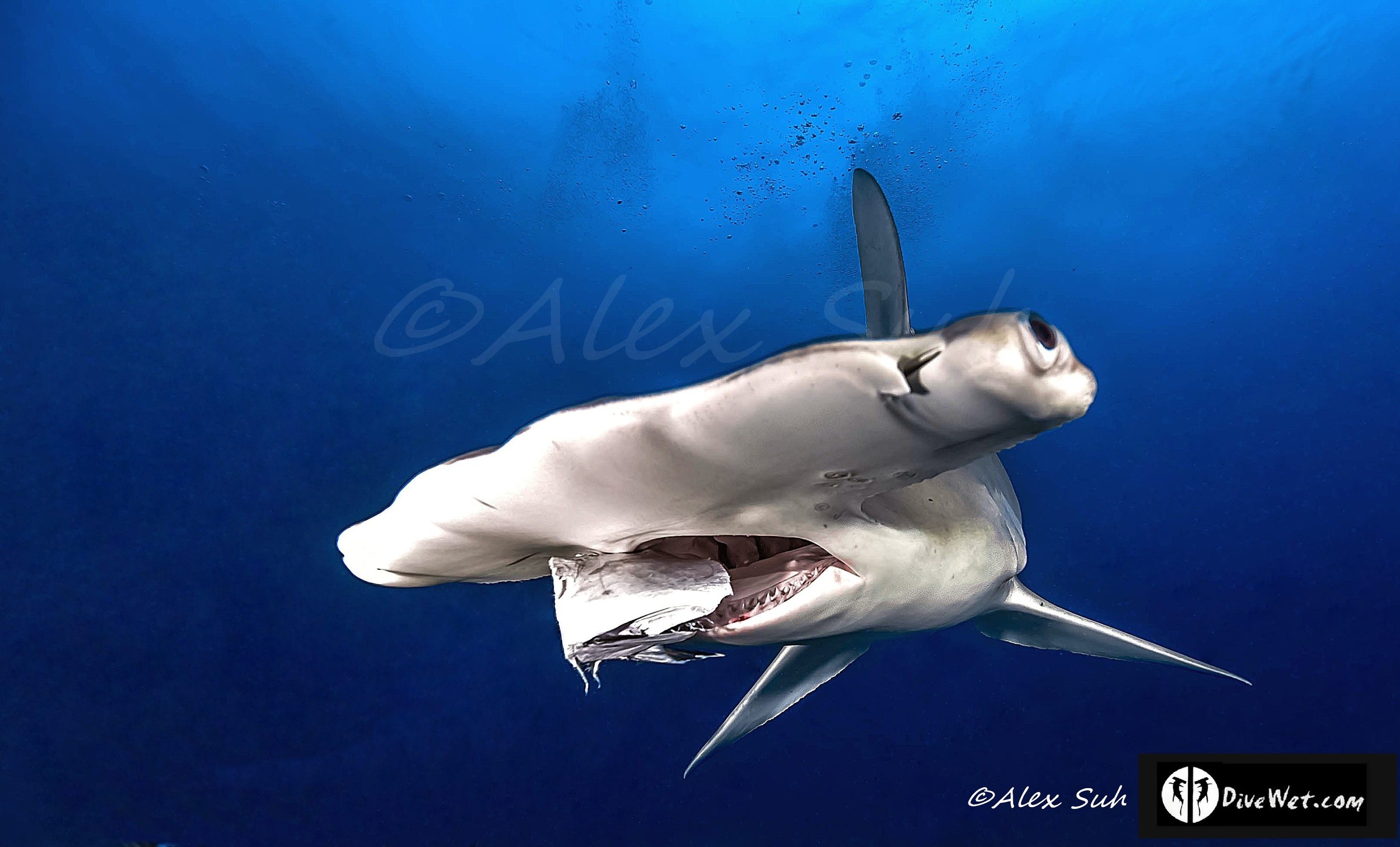
They consume their prey while it is in shock and unable to move. Great hammerhead sharks use their hammer-shaped heads to.

Some species will cannibalize their own species and some will even feed on their own offspring.
What eats hammerhead sharks. Of all sharks the hammerhead has the oddest looking head. It is shaped like a hammer which is where the shark gets its name. Most hammerhead species live in warm temperate and tropical coastal waters.
They eat other sharks squid octopuses and crustaceans. There are no animals that eat hammerhead sharks because they are at the top of the food chain. Humans do eat hammerhead sharks and in some countries are considered to be somewhat of.
The Great Hammerhead shark preys on a diverse group of marine animals. It usually dines at dawn and dusk and includes sea catfishes lobsters tarpon jacks squids sardines toadfishes groupers porgies crustaceans crabs herrings croakers boxfish octopus porcupine fish grunts and even smaller sharks like smoothhounds. It is shaped like a hammer which is where the shark gets its name from.
Most hammerhead species live in warm temperate and tropical coastal waters. They eat other sharks squid octopuses and crustaceans. Their favourite meal is stingray which they pin down using their head.
Hammerhead sharks are consummate predators that use their oddly shaped heads to improve their ability to find prey. Their wide-set eyes give them a better visual range than most other sharks. Humans often eat the meat of hammerhead sharks.
However consumers should be aware that large specimens may have high levels of mercury and other pollutants. Fins skin and teeth are also harvested from sphyrnids and many larger hammerhead sharks are prized as sport fish. Hammerhead sharks as a whole will feed on a wide variety of prey.
They feed on fish smaller sharks squid octopus crabs and lobsters. Stingrays are widely hunted as a favorite food. Some species will cannibalize their own species and some will even feed on their own offspring.
They include octopus fish squid stingrays crustaceans and small sharks including baby Hammerhead Sharks. They tend to look for their food at the bottom of the water and they are very good predators. They use their head to pin down some prey such as stingrays.
They consume their prey while it is in shock and unable to move. In some instances when food is very hard to find the females have been known to. Most hammerhead shark species are apex predators.
They are usually found at the bottom of the ocean lurking and patiently waiting for their prey. They prey on fish crustaceans octopus and squid. Their favorite meal is a stingray.
The great hammerhead is a solitary nomadic predator that tends to be given a wide berth by other reef sharks. Juveniles are preyed upon by larger sharks such as bull sharks Carcharhinus leucas while adults have no major predators except for killer whales who hunt hammerheads of. It happened that the shark-hammer was eating the larger inhabitants of the seas.
The hammerhead shark often devours its more distant relatives the tail beetles without fear of their poisonous thorns. Apparently they developed immunity against thorns secreted by spines. Incredibly there were sharks and cannibals.
What Do Great Hammerhead Sharks Eat. The great hammerhead shark is a solitary hunter. It seeks out its prey at dawn and dusk either near the surface or on the seabed.
The great hammerhead shark eats a wide range of prey from bony fish. Hammerhead sharks are also threatened by culling through lethal shark control programs. In six years 2012-2018 592 hammerheads sharks have been culled at an average of 99 per year 6.
Hammerhead sharks have never been involved in a fatal incident. Since 1937 in NSW and 1962 in QLD lethal shark control programs have been carried out each year using either nets or drumlines. A solitary predator they primarily feed on cephalopods crustaceans stingrays and even other sharks.
Great hammerhead sharks use their hammer-shaped heads to. Like other hammerhead species great hammerhead sharks have long serrated teeth and use their hammer-shaped heads to detect and eat prey. Their heads are equipped with electrical receptors that can sense potential prey including those hiding in the sand.
2 Great hammerheads primarily feed on prey at the seafloor such as stingrays cephalopods octopus and squid crustaceans and other sharks. Some sharks are fussy with food and have specific preferences. For example hammerhead sharks Sphyrnidae family feed almost exclusively on rays while tiger sharks Galeocerdo cuvier prefer turtles and blue sharks Prionace glauca fancy for squids.
Carnivorous sharks are very skilled hunting and use multiple strategies to catch their prey. Large species can swallow an entire animal or tear them.